► Full Praga R1 track test review
► Tested on track at Silverstone
► New Praga Cup launches in 2022
Speed building like a missile on Hangar Straight, the turbocharged racing engine buzzes through the carbon chassis and the moulded race seat mounted straight to it.
Ahead is a tiny, rounded windscreen – like peeking out of a wraparound visor in a giant crash helmet. Stowe corner – virtually a 90-degree right-angle, albeit one that’s taken with downforce-bolstered speed in fourth gear – is approaching on fast-forward.
Leave your braking as late as you dare, willing your left foot to stay off the brake pedal even though its toes are twitching, itching to hit the brakes – then wait a bit longer – NOW. Hit the brake pedal as hard as you can, hoping the downforce and the 280mm racing discs are going to haul off enough speed to get you round safely – and the Praga R1 all but stops. Yep, I could have braked a lot later than that. Time to recalibrate.
Back up a moment. What exactly is the Praga R1?
It’s a tiny but mighty circuit car, created by Czech automotive marque Praga.
Named after the Czech capital, the brand’s been described as ‘the oldest car company nobody’s heard of.’ In its 115-year history it’s manufactured almost every conceivable vehicle from cars to aircraft, via buses, motorcycles and tanks. It’s also a leading kart manufacturer.
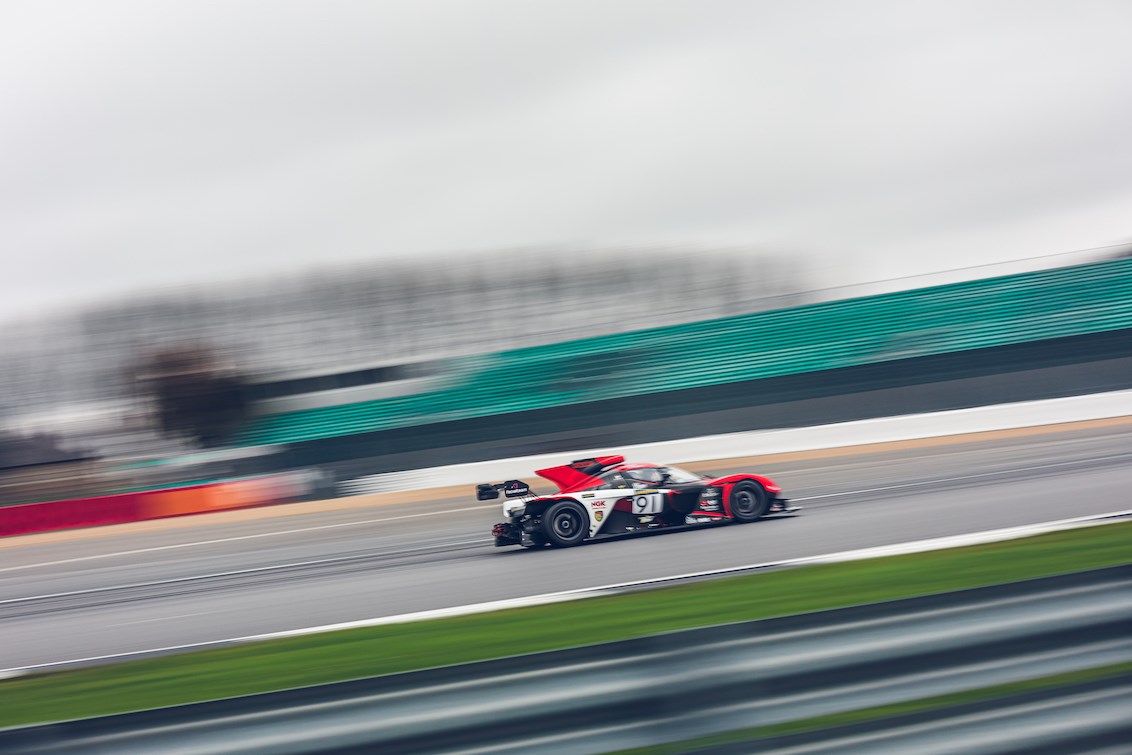
But the R1 is a pure racing and track car. It first appeared in 2012, and it’s been refined and evolved ever since. Originally conceived without a specific set of regulations in mind, as a showcase for what Praga’s engineers can do, the R1 has an extremely small footprint – not least because it’s a single-seater, with bodywork shrink-wrapped around the safety cell – but with extremely high downforce.
One of the drawbacks of the R1’s blue-sky-thinking design is that, especially in the UK, there have been few racing series it fits into the regulations for.
That changed last year, when the BritCar championship enabled Pragas to race within their own class in the series – and showed the cars’ pace, as R1s invariably filled the top steps of the podium, lapping significantly faster than GT3 machinery.
For 2022, the R1 gets its own series to race in, with the launch of a UK Praga Cup – which you can read about here.
What’s it like up close?
Almost like a single-seater formula-style racing car with a broader cockpit – curved like the bulges in a Coke bottle to accelerate airflow – and with bodywork to cover its front wheels. The rear bodywork is ruthlessly abbreviated, leaving the rear tyres exposed, along with the gearbox, exhaust and deep rear diffuser.
Despite every surface being shaped with downforce and aerodynamics in mind, it’s still a decidedly attractive looking car. And never more striking than with a livery by famed car designer Frank Stephenson (with work on his CV including the original New Mini, Maserati MC12 and Ferrari F430, among others). He designed the white-on-blue speed-striped scheme on the car pictured below, which has been nicknamed ‘Frank’ in return – and is up for grabs as a prize in 2022.
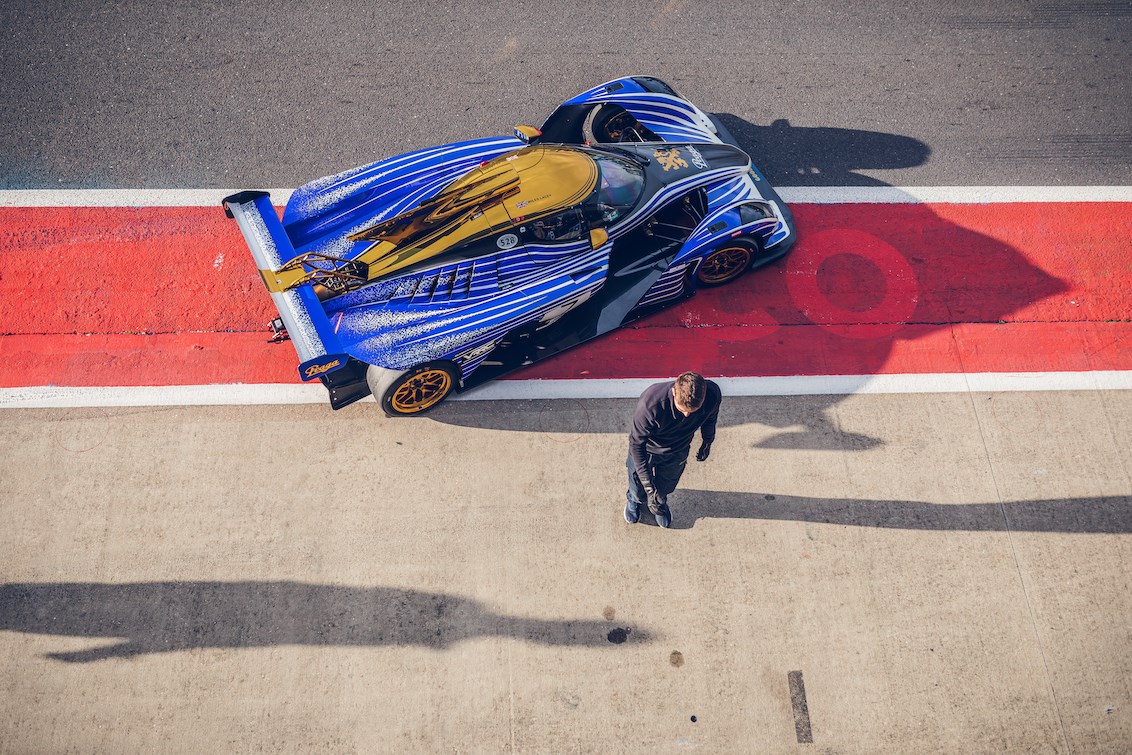
Up for grabs as a prize?
The ‘Frank’ car will be given as a prize to the winner of the 2022 Praga Cup. Valued at £150,000, it’s a giveaway not to be sniffed at.
Almost every Praga on the grid in 2021 had a distinctive livery with a nickname, including ‘Blade,’ ‘Goldie’ and ‘Ruby’ – and it’s the red Ruby car we’re testing today, at a wintry Silverstone.
What’s it like inside?
As claustrophobic as it looks like from the outside, despite having only one seat. It’s snug in here. And tricky to climb into. Yet Praga’s drivers perform changes so quickly at pitstops – clearly it takes practice.
Your feet are raised higher than your hips, the better for creating aerodynamic downforce from the car’s nose section.
Switchgear is positioned on the steering wheel and on the roof panel – a press of the starter button above your head fires the buzzy, boisterous engine bolted to the chassis behind your seat. And since the carbon assembly your seat moulding is sited in is attached directly to the chassis too, you really feel it.
And that engine is?
A four-cylinder Renault-Alpine turbocharged 2.0-litre race engine, with 365bhp. If that sounds like small fry compared to a GT3 car’s V8, V10 or straight-six, in the Praga, which weighs only 643kg, it’s plenty.
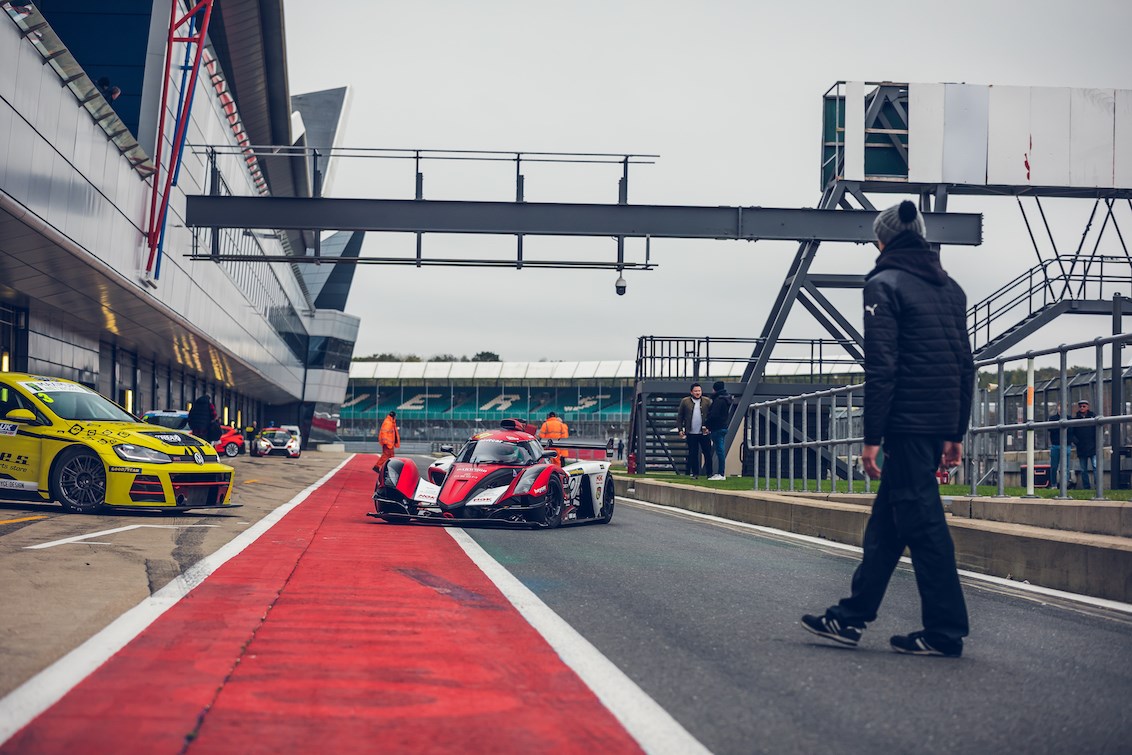
The R1 has 0.57bhp for every kilogram, and with such high downforce, it’s capable of formidable laptimes. The engine is closely related to that used in Formula Renault, but tuned with tolerances for longer endurance racing and fewer services. Praga claims the R1 is significantly more cost-effective to run than a heavier, more powerful GT3 car.
Okay. So, how does it feel to drive?
Out of the pits, heavy-ish clutch pedal offset to the left. Once you’ve used it to pull away, you won’t need it again and your left foot sits in a channel to stop it being dragged to one side by G-forces. This is a car designed for left-foot braking. Gearchanges, from the bespoke six-speed Hewland ’box, are by paddleshift, with autoblip to avoid locking the rear wheels.
There’s no power steering – in a car this light you don’t need it – although with grippy slick tyres and heavy downforce, it weights up and the R1 can no doubt feel quite physical in an endurance race stint. The steering is incredibly direct and immediate; almost more like that of a kart than a car.
Being sat in the middle adds to that feeling, although it’s trickier to judge the car’s width than I expected. Even though you can just about see the front wheels through the cutouts in the front bodywork, it takes a lap or two to get your bearings and work out how close, or far away, you are from the extremities of Silverstone’s kerbs.
Despite being turbocharged, the engine doesn’t feel at all laggy; it’s very progressive. The powerband is narrow, and the torque curve relentless, gearchanges coming almost as fast as you can say them. Shift-light, upshift, shift-light, upshift…
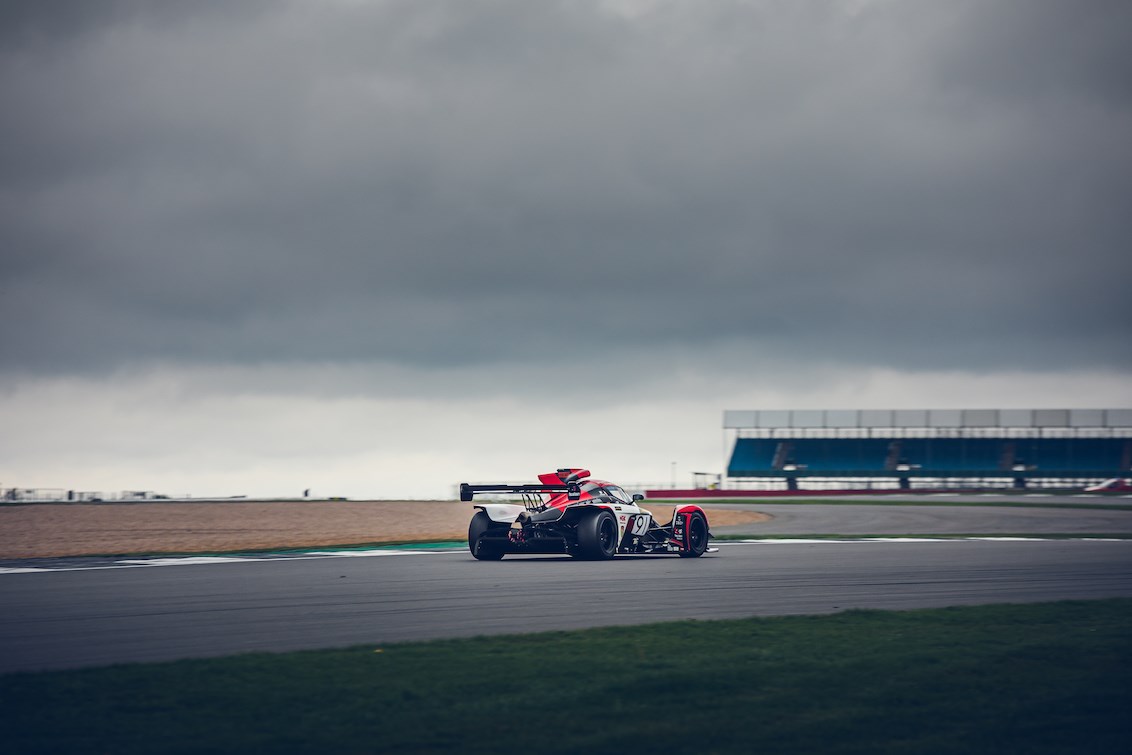
Speed building on Hangar Straight, the vibration is intense, almost to the point that it affects your breathing at certain frequencies – a function of the integrated rollover bar required for BritCar regulations (the R1’s carbon chassis would be strong enough to sustain it a rollover without it), which transmits some extra vibration into the cockpit. Praga’s already engineered a revised version, which does away with extra vibration and will be rolled out to 2022 cars.
This really is a tiny car. Lapping Silverstone amid a variety of other racing cars on this motorsport industry day, you’re sat low and reclined enough to find yourself looking up at a McLaren 650 GT3’s flame-spitting exhausts. That’s a compact car but one that towers over the Praga. All the more surreally, it’s holding the R1 up.
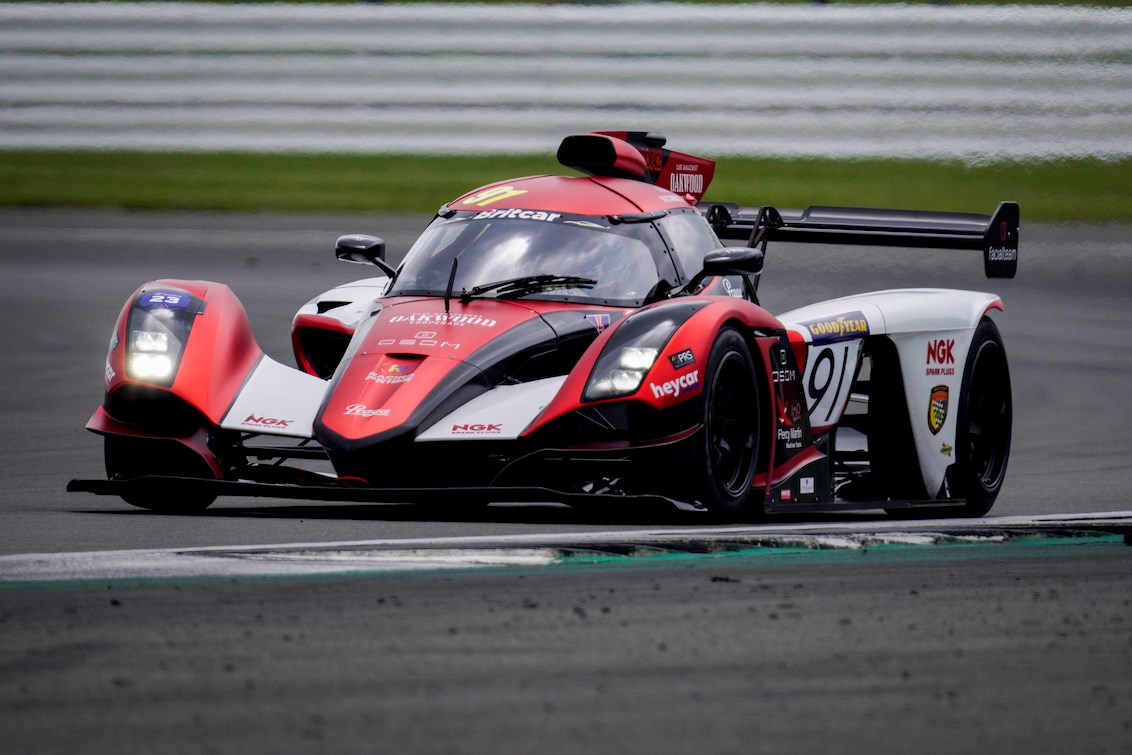
Likewise it’s a strange feeling watching a VW Golf TCR touring car cornering on the limit, inside rear wheel trailing tyre smoke then freezeframed in fresh air as it lifts clear of Silverstone’s surface – while the R1 is virtually trundling along behind, as if following a safety car, waiting for a straight so it can blast past and get back up to full speed.
The wheelbase being small, it needs respect on cold tyres especially on a chilly day like today – I’m not aggressive enough getting heat into them on the first couple of laps and then experience a big stab of lift-off oversteer through the quick Abbey corner – but once up to temperature it’s a confidence-inspiring car that urges you to brake later for slow corners, get on the power sooner, dig deeper.
More than anything, it leaves you craving just one more lap.
Is it road-legal?
No – although Praga has built a road-legal version, the R1R, in 2016, with production limited to 68 units.
Driving this race-spec R1, it’s tantalising to imagine how exciting a car with this immediacy of response, this level of performance and like-nothing-else design would feel on the road, if Praga were to translate the knowledge it’s built in the R1 programme into a hypercar. The company has the expertise…
Verdict
Unique in style, exhilarating to drive and with performance to outpoint a GT3 car while also being less expensive to run, for such an extreme car the R1 has a broad set of strings to its bow.
Including a strong marketing campaign; to raise brand awareness in 2021 Praga enlisted guest drivers with big followings to campaign R1s in the 2021 BritCar championship. Among them, sim racing star Jimmy Broadbent (who has re-signed with Praga for 2022), former-Stig Ben Collins, YouTuber James Walker, ex-SAS operator/Everest summiteer/TV presenter Jay Morton and racing driver Charlie Martin. Some were professional racing drivers, others almost novices, which Praga says demonstrates the R1 is a car that drivers at the beginning of their career can get to grips with, while also challenging seasoned pros.
Now that it has a series of its own, there are tangible reasons why a prospective driver or race team might choose to run a Praga over a GT car, a prototype or even a single-seater. And with the R1 being an uncanny blend of all three, a driver graduating from the series could pursue any one of those routes further up the ladder. Or, given that they’ll have ‘Frank’ as a prize, they could keep on competing in this beautiful, slightly mad and intensely addictive racing car.
Photography by Will Aron, additional pictures by Dom Fraser